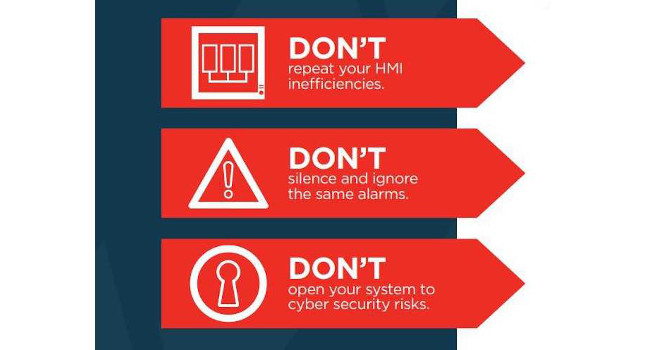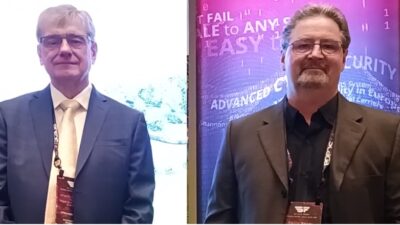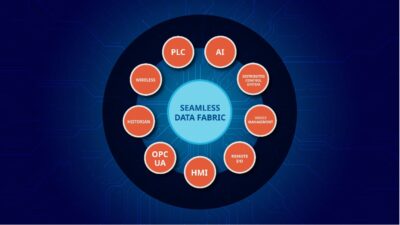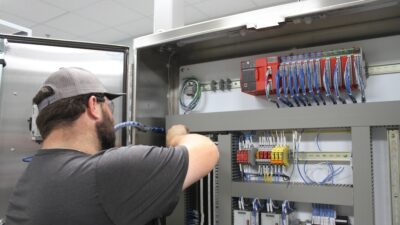Migrating controls: Plan ahead with any process control system migration to stay on track. Use front-end loading on the project, and ask these 10 questions about migrating from a legacy distributed control system (DCS) or other controls to upgraded options.

What manufacturer doesn’t cringe at the thought of migrating legacy control system technology? Most control systems were installed or updated in the late 80s and 90s and are overwhelmingly fragmented and fraught with challenges. Taking a wait-and-see approach is no longer a viable option, as manufacturers face new standards and regulatory compliance mandates, along with disparate and obsolete systems requiring hard-to-find original equipment manufacturer (OEM) spare parts and higher support costs. Compounding these challenges are associated safety and cybersecurity risks in operating and maintaining legacy systems.
With all the new innovative technologies on the market, it’s a good time to reevaluate processes and systems and look at opportunities to improve operational efficiency and performance to stay competitive. For many manufacturers, tackling a project of this magnitude with limited bandwidth and resources is no easy feat. It’s also not easy deciding whether to replace systems piecemeal or start over with new systems. No matter the chosen path, upfront planning and a qualified team are key to moving into the execution phase of an upgrade or migration project for a distributed control system (DCS), process control system (PCS), or programmable logic controller (PLC)-based system.
Plan and execute
First, before deciding on which upgrade or migration path to take, it is important to take a holistic look at the entire facility’s operations. Regardless of a facility’s size, a solid plan from conception of the migration through startup must be considered for a successful project. A disciplined approach helps to define a scope that aligns with business goals and objectives and to outline facility requirements.
This front-end loading (FEL) engineering effort helps ensure an execution plan and schedule are in place to keep the project(s) on time and on budget. It also supports defendable control system solutions to determine the best platform, identify and define any risks, and provide accurate and justifiable cost estimates. The result is a successful project execution plan with a functional platform in place for operational efficiency and profitability.
Engage a qualified DCS migration team
Where bandwidth and resource limitations are an issue, engaging third-party control system specific experts up front and using them throughout the project will increase the project’s success. Experienced guidance will pay dividends if obtained during the conceptual phase of the migration. Waiting to engage an external partner later in the project means many aspects of the scope will already be defined based on assumptions made up front that may or may not have included an all-inclusive view of the entire site’s needs. Changing these decisions late in the project will result in higher costs and schedule delays compared with getting them set correctly during the initial FEL phase.
A platform-independent partner will deliver unbiased practical experience working on a variety of manufacturing processes and technologies. This qualified team of experts will utilize best practices and successfully help lead the project through the execution and implementation phases. It is best to work with a team early in the FEL stage to avoid delayed schedules and higher costs later.
Additionally, an ideal partner is one who is in it for the long haul and knows what is needed to improve performance moving forward. Continuous improvement initiatives are beneficial, especially once all is up and running smoothly. With these initiatives in place, manufacturers can optimize processes and increase operational safety and efficiency. To keep an ongoing competitive advantage, manufacturers can consult with their trusted partner to help incorporate these initiatives as part of the overall long-term plan.
Piecemeal DCS replacement or rip and replace?
The pros and cons of whether to do a piecemeal replacement versus a rip and replace depend on the facility. Many factors need to be considered that are specific and unique to the facility and should be defined during the FEL effort. Neither approach is without some risk. For example, taking a piecemeal approach with a facility-wide plan risks ending up with an eclectic system. On the other hand, a full-scale control system migration requires extra planning to minimize unit downtime. In addition, the bigger the project, the longer it will take to program and test a new system.
Ripping and replacing the whole system, however, may not be required. Much depends on the lifecycle of the existing hardware/software and whether a manufacturer wants to stay with their existing control system original equipment manufacturer (OEM) or contract with an engineering, procurement, construction (EPC) company, or a process automation solutions provider.
Ten questions for DCS migration
To help choose a DCS migration path, consider the following 10 questions to help steer the overall project:
- Is there evidence new technology could improve output?
- Is there an existing installation base of new technology within the site that could be built or expanded upon?
- How is the relationship with the existing OEM?
- Does the current equipment allow for modern security?
- Does the existing system have the modern amenities for ease of maintenance and engineering?
- Does the existing system have the modern amenities for ease of future innovations?
- Does the existing system have the necessary memory and space for expandability?
- Is the legacy system so old and antiquated that it would be easier to start over, especially if increased output could increase profitability?
- Have the risks for both migration paths been identified, and a cost put to them?
- From a conceptual perspective (FEL1 ±50%), which would cost more — piecemeal or rip and replace — and why?
A trusted, unbiased third-party partner can address all these factors, offer professional guidance and help brainstorm the pros and cons of an upgrade or migration.
Key to a successful DCS migration
Expertise specifically for defining a control system plan, scope and budget are key to the success of the project regardless of the size and regardless of the control system platform. Depending on a project’s complexity, manufacturers should work with a partner who is knowledgeable in most DCS and PLC platforms and third-party interfaces.
They also should be able to create drawings or sketches for updates, create control system narratives, plan outages and give the project the attention it deserves. Sustaining services should be on the list as well. The third-party partner shouldn’t walk away once the project is commissioned and started up, either. With a planned approach and the right partner, manufacturers should end up with a fully integrated, highly-functioning and sustainable control system infrastructure.
Lynn Njaa is a senior consultant for Maverick Technologies’ DCSNext solution. Maverick Technologies is a Control Engineering content partner. Edited by Mark T. Hoske, content manager, Control Engineering, CFE Media, [email protected].
KEYWORDS: Distributed control system (DCS), migration, controls upgrade
Migrating control systems requires extensive planning.
Efficiency and cybersecurity risks increase as legacy systems expire.
Ask these DCS migration questions to determine the best path.
CONSIDER THIS
Don’t wait until it’s too late to migrate legacy control systems. A threat may exist, even if you don’t know about it yet.


